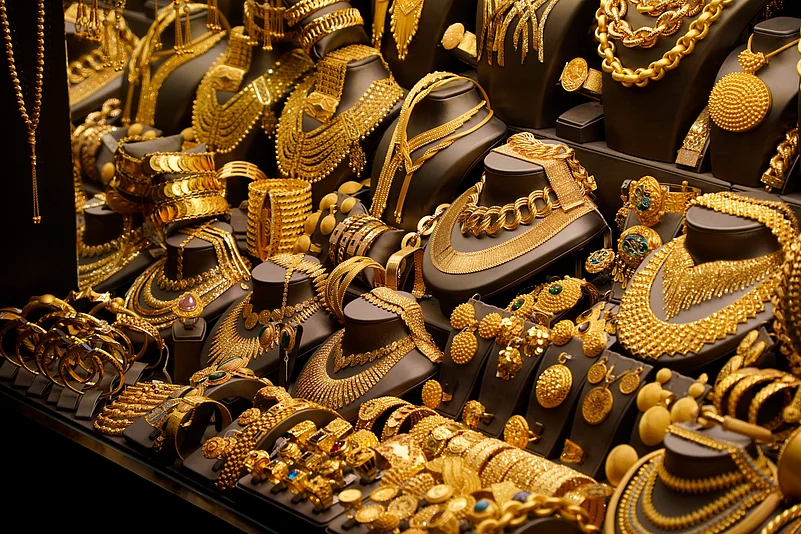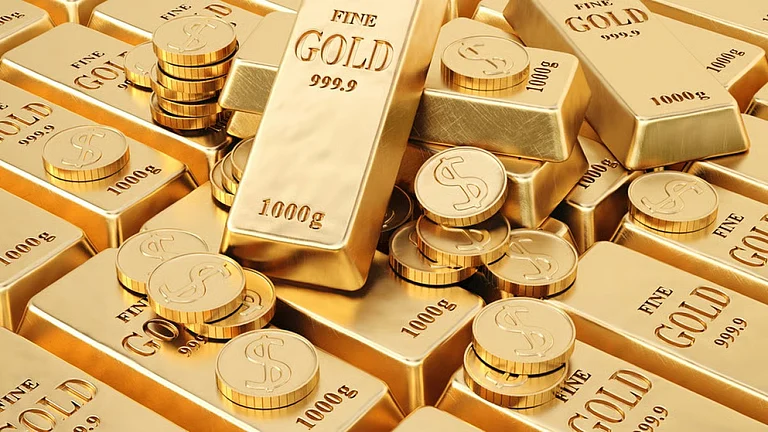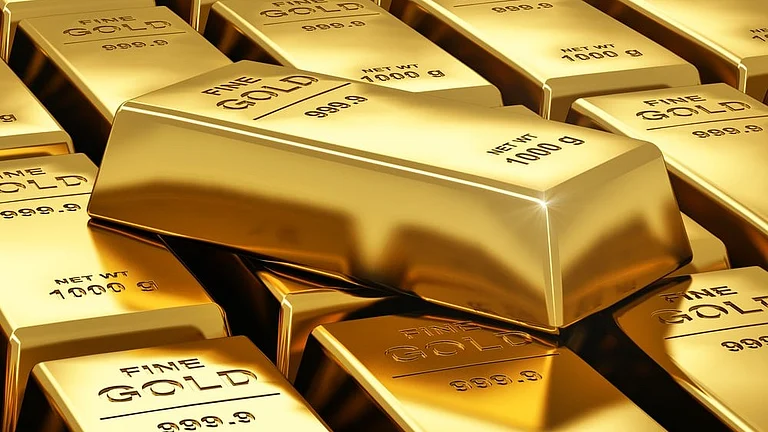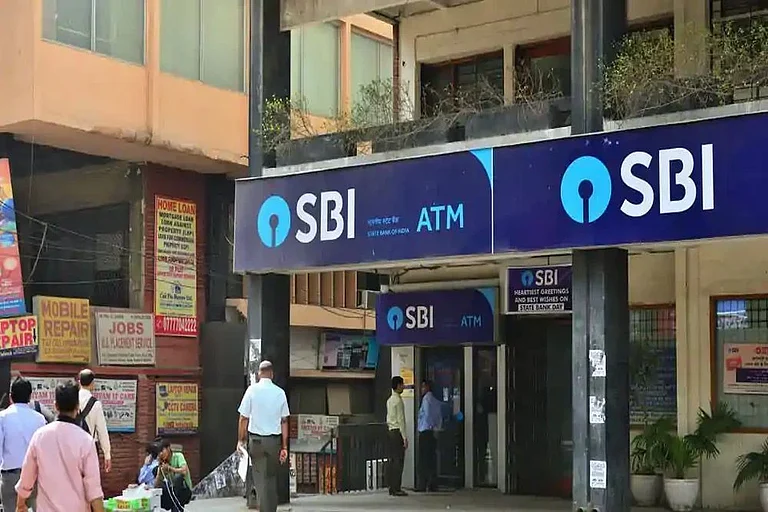Credit disbursement for loans against gold jewellery jumped in January 2025, when prices of gold saw a record jump. The Reserve Bank of India (RBI) data published on February 28 indicated that the gold loan portfolio expanded by a whopping 76.9 per cent during January 2025, whereas it had expanded by 17.4 per cent in the corresponding period last year. In absolute terms, gold jewellery loans outstanding were Rs 1.79 lakh crore as of January 24, 2025, much larger than Rs 1.01 lakh crore a year ago and Rs 86,133 crore in January 2023.
The information, which was compiled from 41 scheduled commercial banks, accounted for about 95 per cent of the aggregate non-food credit extended by all scheduled commercial banks. Though the gold loan demand surged, the overall growth of personal loans declined. Personal loan growth dropped to 14.2 per cent as of January 24, 2025, from 18.2 per cent a year ago. Likewise, credit growth for the 'other personal loans' segment dropped to 8.7 per cent from 23.1 per cent, while education loan growth decelerated to 15.9 per cent from 23.5 per cent a year ago. Credit card outstanding growth also fell sharply to 13 per cent in January 2025 from 31.3 per cent in the previous year.
Gold Price Impact
Increased gold prices imply that individuals can mortgage less gold for the same amount of loan. Indian gold prices reached Rs 80,430 to Rs 83,230 per 10 grams in January 2025, a huge increase from around Rs 62,690 to Rs 64,090 per 10 grams in early 2024. Increased gold prices raise the value of mortgaged jewellery, enabling borrowers to borrow more.
RBI’s loan-to-value (LTV) ratio limit, which allows borrowers to get loans up to 75 per cent of the gold’s value, also plays a key role. When gold prices rise, borrowers can secure larger loans without needing to pledge additional jewellery. However, during price fluctuations, borrowers may face challenges if the value of their pledged gold falls, potentially leading to additional margin requirements or reduced borrowing capacity.
"I recently had to take a gold loan to pay for my wife's medical treatment. It was the fastest means of getting money without much documentation or lengthy processing," said Soumitra, a 62-year-old Siliguri, West Bengal resident. "At my age, it is not easy to get an unsecured loan, and banks are slow with big amounts. But with gold, they were ready to lend me the amount I required almost immediately. The increasing gold prices also worked in my favour, as I received a higher loan value against my jewellery."
Lenders, such as banks and non-banking financial corporations (NBFCs), have been aggressively pushing gold loans. Public sector banks, in general, have experienced a sharp rise in their gold loan books, as they provide competitive interest rates compared to NBFCs.
Reasons for the Growth
Economic Conditions: Increased interest rates on other loans may have driven individuals towards gold loans, as they provide relatively lower interest rates and faster processing.
Credit Availability: Gold loans are less difficult to obtain than unsecured personal loans, so they are a better option for those with poor credit scores or lesser banking history.
Seasonal or Festive Demand: January is a part of the wedding and festive season, which in turn tends to see increased borrowing as families need money for ceremonies, gifts, and other miscellaneous expenses.
Personal Loan Growth Slows as Credit Costs Increase
The moderation in personal loan expansion is due to a mix of reasons such as higher interest rates and stricter credit standards. RBI has been prudent in its approach to retail lending, asking banks to be risk-disciplined in unsecured loans. The excessive growth in unsecured loans in the last two years has also raised concerns regarding asset quality, leading some banks to raise lending standards.
Additionally, higher borrowing costs have impacted consumer sentiment. The weighted average lending rate on new personal loans rose to 13.2 per cent in January 2025, from 11.8 per cent a year earlier. Higher interest rates on unsecured loans could have encouraged borrowers to opt for secured loans such as gold loans, which usually carry lower interest rates of 8-12 per cent, depending on the lender and loan-to-value (LTV) ratio.
According to Shaji Varghese, the CEO of Muthoot Fincorp Limited, "Gold loan is a well-identified category today. Gold loans have been growing steadily since the past few quarters owing to their own strong features including zero prepayment charges unlike personal loans, daily repayment & interest only on outstanding amounts, flexibility in repayment, including bullet payment options and many more. Today it is a widely accepted and a popular choice among customers especially for short-term requirements and acts as a vital financial inclusion tool. The momentum is expected to continue in the coming quarters significantly due to these features ensuring accessibility, ease, convenience and flexibility".
While gold loans saw a boom, the other segments saw mixed credit growth. Credit to agriculture and related activities increased to 12.2 per cent as of January 24, 2025, compared to 20 per cent a year ago. Credit to industry, however, recorded some improvement, increasing by 8.2 per cent against 7.5 per cent in January 2024. For major industries, outstanding credit to industries like petroleum, coal products, basic metals, and engineering products reported a higher growth rate.















